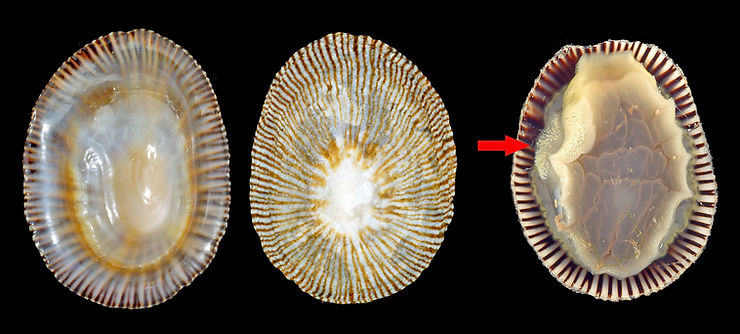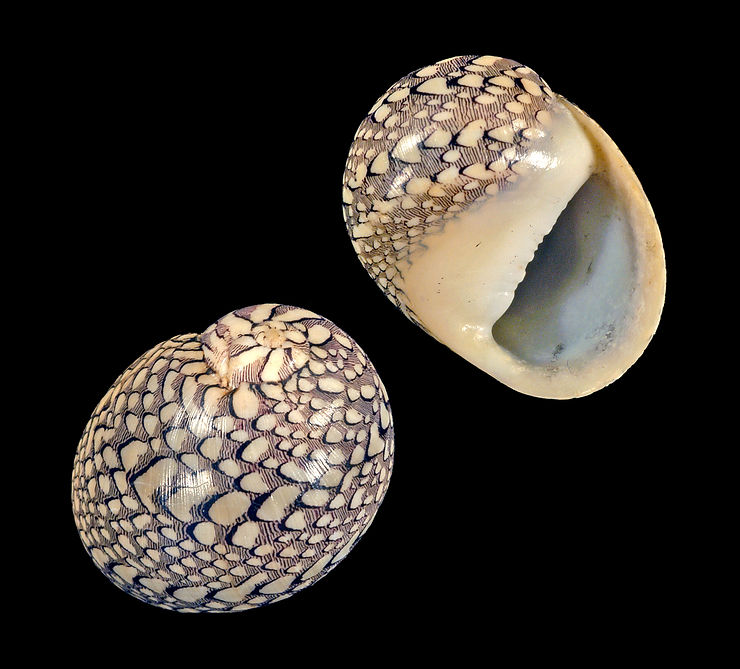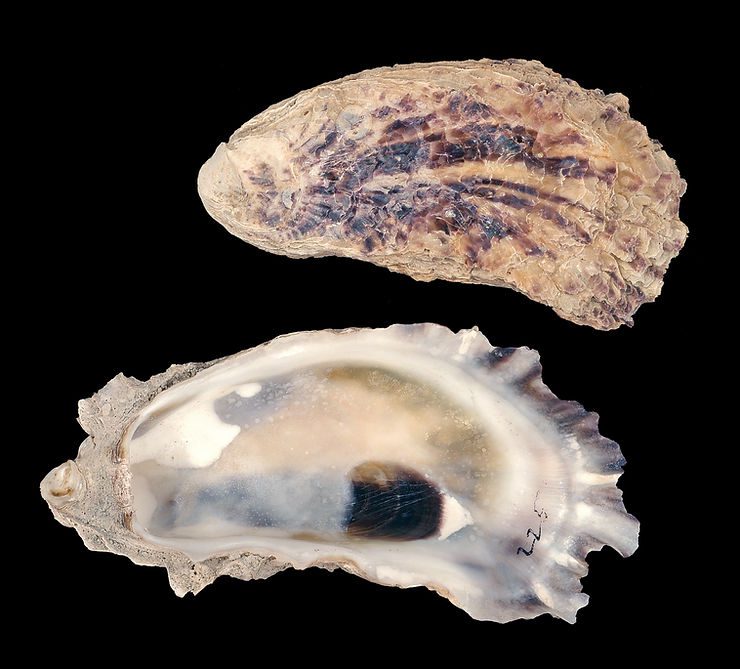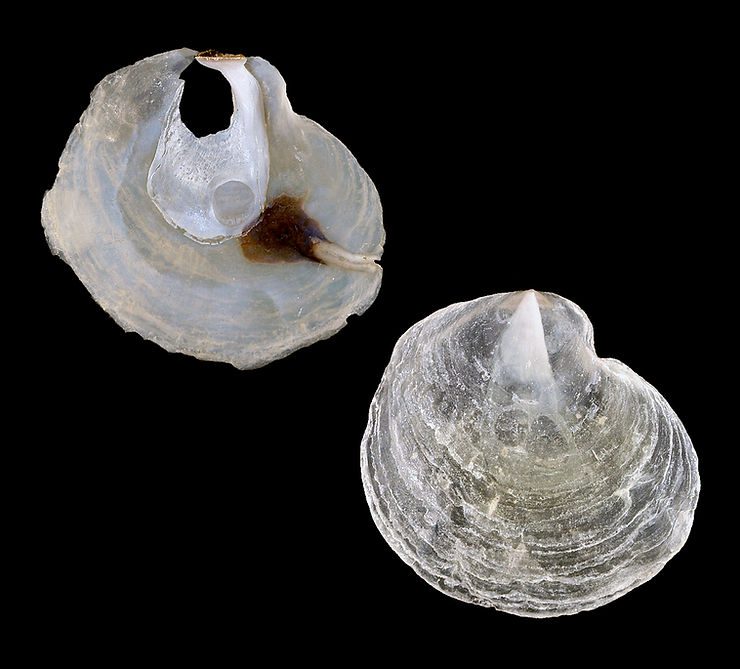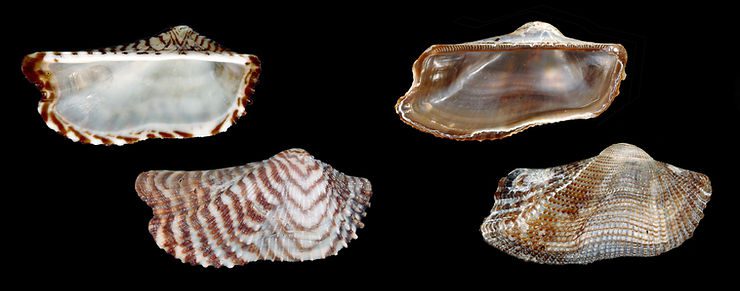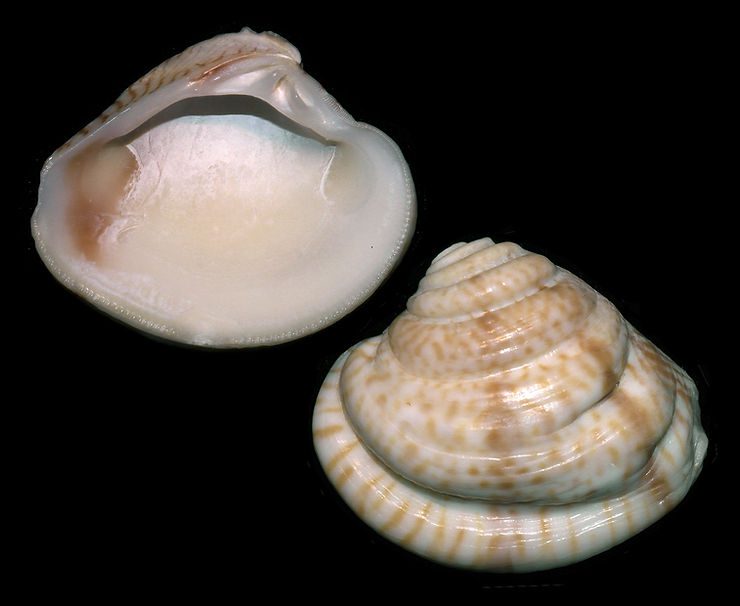
The Antilles Glassy Bubble
The Antilles Glassy Bubble, Haminoea antillarum (d’Orbigny, 1841), has a very thin, globose, and glass-like shell. Live animals can be seen, sometimes in larger numbers, in the bays and protected seagrass flats of Southwest Florida, in particular during the Spring. Live Glassy Bubbles completely envelop their shells with their bodies. The species is hermaphroditic (both male and female reproductive tracts in the same individual), and the egg mass consists of a transparent and gelatinous, collar-
